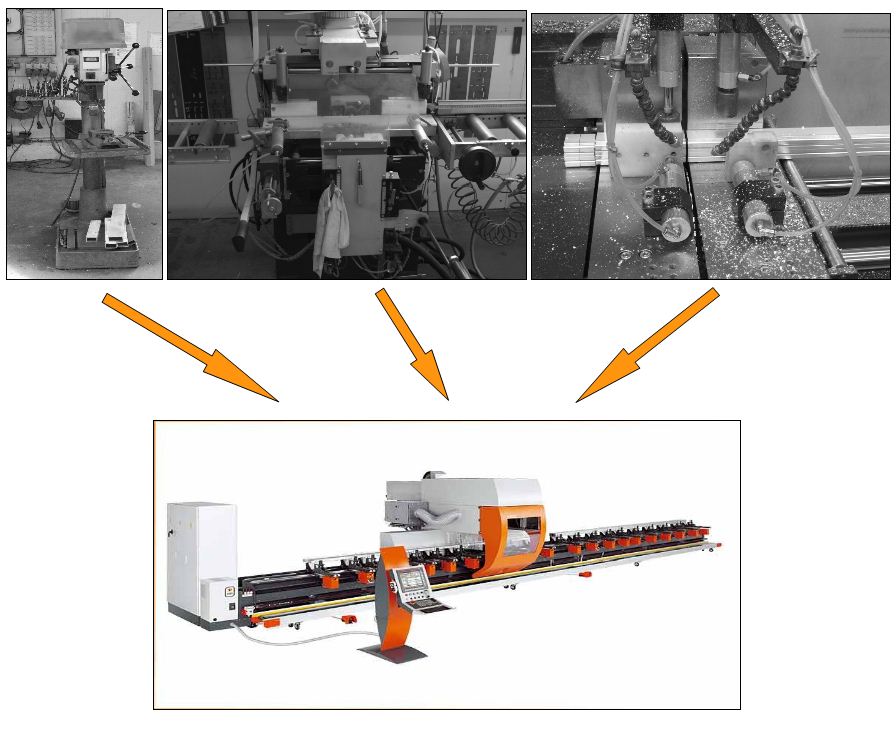To be able to use the “Rod processing” module, the user requires a rod processing centre that has a free-swinging saw blade so that the profile rods can be sawn in any possible angle. The machine must have autonomous fixture positioning so that multiple fixtures can be moved simultaneously. Another requirement: Lowerable stops, because only then can fixtures be moved beyond both station limits. These requirements are met by, for example, the SBZ 151 rod processing centre by elumatec.
The “Rod processing” module offers the option of fabricating multiple individual parts from a profile rod that is put in place once. Single parts must therefore not be pre-sawn on an external saw and then carried to the processing centre – instead, the profile rod is placed onto the processing centre once, then processed and sawn. Processing on the face of parts is also possible: To do this, the fixtures holding the parts move far enough apart that the spindle has enough room to swing into the resulting gap to carry out the processing. All the individual parts created from the rod can be marked uniquely – with labels printed by a label printer at the machine.

Modern profile machining: Instead of three machines and their operators, now only a single machine is needed. The profile rod is not carried from station to station, but rather is processed and sawn on the rod processing centre.
Carrying single parts from the saw to the drill and then to the profile miller – that is, walking from machine to machine – is a costly, personnel-intensive work organisation. The state of the art is more rational rod processing that in summary offers the following advantages:
- Only one work sequence on a single machine instead of on three small machines
- Only one machine operator needed instead of up to three employees earlier
- Profile processing is overall faster
- Rational working: The machine operator saves the step of “Programming saw cuts”, because the angles for the saw cuts are naturally already known.
- There is a single program for multiple parts; the programmer does not need to create numerous individual programs
- Once the profile rod is in place and the processing program started, the rod processing centre works automatically for a while: During this time, the machine operator can handle other tasks – such as deburring parts
- Work methods that are gentle for profiles, since the profile is clamped only once and can be processed with angle heads even from below.
- Parts can be pulled apart for processing on the face
- Setup in production is less complicated: Instead of a transport truck with sawed individual parts, only a storage place for for the profile rod is needed
- No storage of single parts
- No searching for single parts; material need not be gathered from different areas
- No scratched single parts
